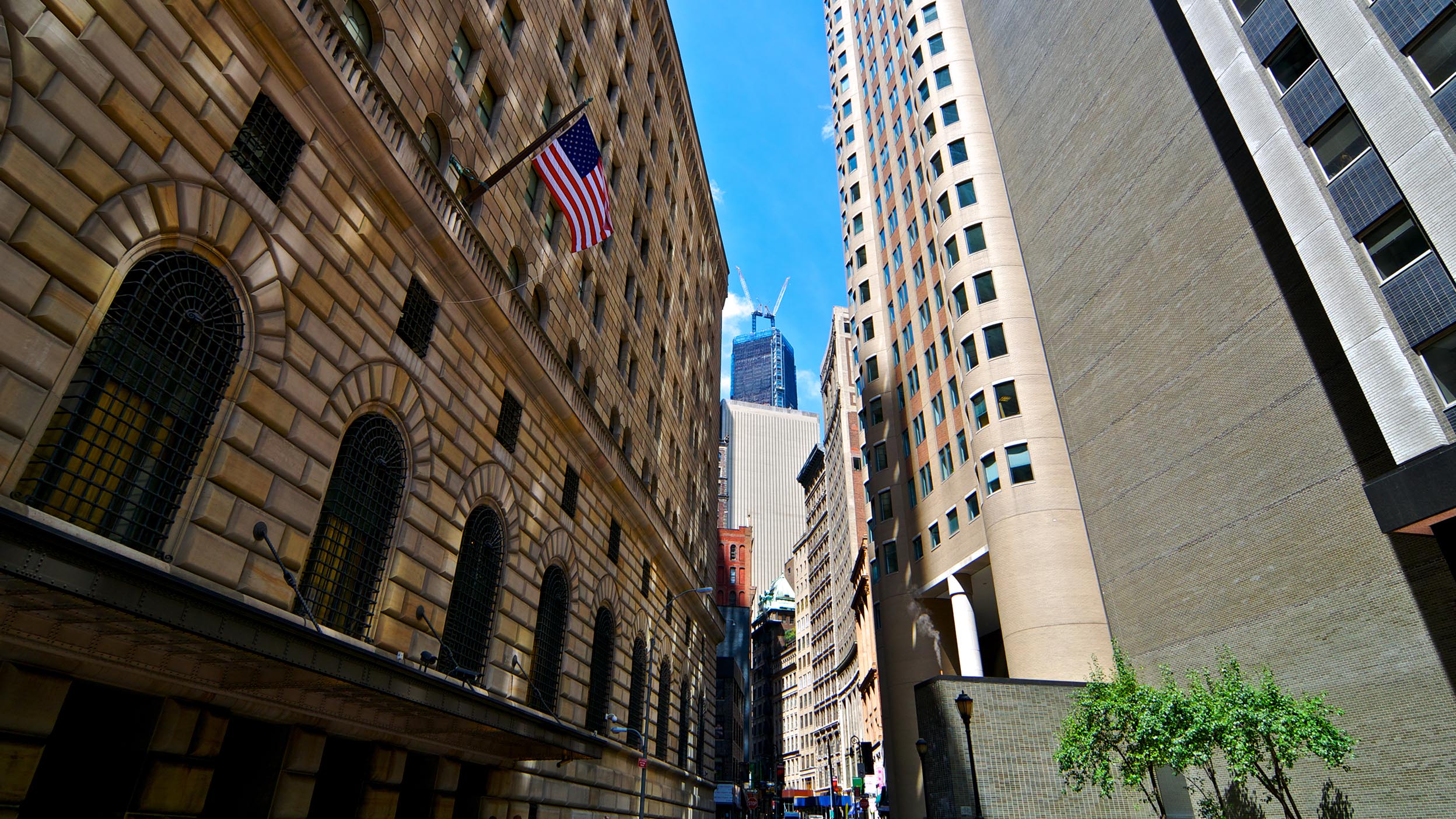
Investment grade Investment grade outlook: Insights for November
We expect OK growth and lower rates, and are focusing on the front-end of duration, and continuing to lean into sectors with strong fundamentals.

A curve steepener, long on the front end of the curve while being short on the long end of the curve, has helped performance.
Despite uncertainty, bonds have provided a better-than-expected return this year and yields have, in our view, been attractive.1
Overall, we believe the worst of the volatility is behind us, which generally may mean spreads should have room to run.
With geopolitical uncertainties influencing credit markets, we discuss the various market drivers and where we think bonds may be headed in the coming months.
Craig: There’s been a lot of speculation about a buyers’ strike on US Treasuries, bonds, and equities. What’s your take?
Matt: We’re not seeing a buyer strike, or even a buyers’ pause. We’re just seeing a little bit more competition. Yields are higher in a lot of different places, particularly in Japan, so they’re competing with US assets. That’s opposed to the last several years where they were the only game in town because of negative yielding debt around the globe. Also, there are some tax policies in the Trump administration’s “Big Beautiful Bill” that have the potential to deter foreigner investors. Also, there was an initial shock from tariffs and concern around volatility. There’s still uncertainty, but the market got a better feel for where Trump may be headed, and overall there’s still a huge demand for US Treasurys and fixed income.2
Craig: What’s your thinking about the US Federal Reserve (Fed) cutting rates?
Matt: The market is still pricing in two cuts, but I think the feeling has increasingly been that we might not see any cuts this year. We’ve seen better-than-expected labor market statistics, and investors are still concerned about inflation given the tariff uncertainty. If the Fed doesn’t cut rates this year, it generally will mean that the US economy has been better than people have been fearing. That’s starting to look like it might be a possibility. On the other hand, if we were to go into a recession near term, the Fed could quickly cut three or four times to kick start the economy. Overall, our opinion is that the economy is actually better than people had feared. We’ve now had three recessions predicted in just the last three years, and zero of them have played out.
Craig: What are your thoughts about positioning on the yield curve?
Matt: We had a curve steepening, which means we were long on the front end of the curve while being short on the long end of the curve.3 That helped performance. I think it makes sense to still be slightly overweight in the front end based on where we are now. As I said, we do think the economy is better than most people fear. However, if we are wrong and there is a recession, we have an overweight in credit assets. Credit spreads would widen in that scenario, but the curve positioning could somewhat offset that move if the Fed reduced rates. At the same time, we are cautious at the long end because the budget deficit is not going to get any better anytime soon.
Craig: What are your thoughts about bond returns for the rest of the year?
Matt: Annualized returns for fixed income since Q4, 2024 have been around 5.5-6%.4 But it hasn’t felt good, in our view, because there are concerns around the budget deficit, inflation, and whether the Fed will cut or not. It’s been volatile and there’s been a lot of uncertainty.
But you still have attractive yields, and that’s what matters most. The yield on the Bloomberg US Corporate Bond Index coming into the year was 5.3%. I think the yield on the Bloomberg US Aggregate Bond Index was about 4.9%. Those are the highest they’ve been in over 15 years.5 So a good way to think about bonds in our view is that you’ve gotten a better-than-expected-return this year and your yield is still good, so you haven’t missed the trade.
Craig: Is the market being too optimistic from a credit spread perspective? How do you think about the next leg of the corporate bond universe?
Matt: It’s certainly an unloved bond market right now from a credit standpoint, in our view. I think a lot of investors wish there was more of a credit spread because there’s still uncertainty. However, yields are what’s driving inflows, and it’s driving buyers to say “I can buy a high-quality single A credit for 10 years at 5.5%. Why would I not want to do that?” We wish spreads were wider, even at their worst, we’re looking at them and saying, “well, they’re not pricing in a recession. What happens if it occurs?” Overall, we believe the worst is behind us from a volatility standpoint, which generally means spreads should have a room to run from here.

We expect OK growth and lower rates, and are focusing on the front-end of duration, and continuing to lean into sectors with strong fundamentals.

Get insight on why Treasury rates moved higher, markets reacted in seemingly counterintuitive ways, and investment grade demand remained strong.

The Federal Reserve’s next move is on investors’ minds. What could a rate cut mean for investment grade bonds? We answer this question and more.


Get the latest information and insights from our portfolio managers, market strategists, and investment experts.
Important information
NA4576695
Image: Roberto Moiola / Sysaworld / Getty
Most references are US-centric and may not apply to Canada. All data is in USD unless otherwise stated.
All investing involves risk, including the risk of loss.
Past performance does not guarantee future results.
Investments cannot be made directly in an index.
This does not constitute a recommendation of any investment strategy or product for a particular investor. Investors should consult a financial professional before making any investment decisions.
Fixed income investments are subject to credit risk of the issuer and the effects of changing interest rates. Interest rate risk refers to the risk that bond prices generally fall as interest rates rise and vice versa. An issuer may be unable to meet interest and/or principal payments, thereby causing its instruments to decrease in value and lowering the issuer’s credit rating.
The Bloomberg US Corporate Bond Index measures the investment grade, fixed-rate, taxable corporate bond market. It includes USD denominated securities publicly issued by US and non-US industrial, utility and financial issuers.
The Bloomberg US Aggregate Bond Index is an unmanaged index considered representative of the US investment-grade, fixed-rate bond market.
The Bloomberg FEDL01 Index represents the average interest rate at which commercial banks borrow and lend excess reserves to each other overnight. It's a key indicator of the cost of borrowing for banks and is heavily influenced by the Federal Reserve's target rate. The Federal Reserve uses this rate as a primary tool to implement monetary policy and manage the overall economy.
The Bloomberg USGG2YR Index represents the yield received for investing in a US government issued treasury security with a maturity of 2 years. It is a key indicator of the shorter end of the yield curve and is considered important for understanding the overall US economy.
The Bloomberg USGG30YR Index represents the U.S. Generic 30-year Treasury Yield. This index provides a historical rate for the 30-year U.S. Treasury, derived from market data, as opposed to the mathematically calculated "par-yield" provided by the U.S. Department of the Treasury.
Inflation is the rate at which the general price level for goods and services is increasing.
Credit spread is the difference in yield between bonds of similar maturity but with different credit quality.
The yield curve plots interest rates, at a set point in time, of bonds having equal credit quality but differing maturity dates to project future interest rate changes and economic activity.
The opinions referenced above are those of the author as of June 6, 2025 and are based on market conditions as of May 31, 2025. These opinions may differ from those of other Invesco investment professionals and are subject to change without notice.
These comments should not be construed as recommendations, but as an illustration of broader themes. Forward-looking statements are not guarantees of future results. They involve risks, uncertainties and assumptions; there can be no assurance that actual results will not differ materially from expectations.
This link takes you to a site not affiliated with Invesco. The site is for informational purposes only. Invesco does not guarantee nor take any responsibility for any of the content.